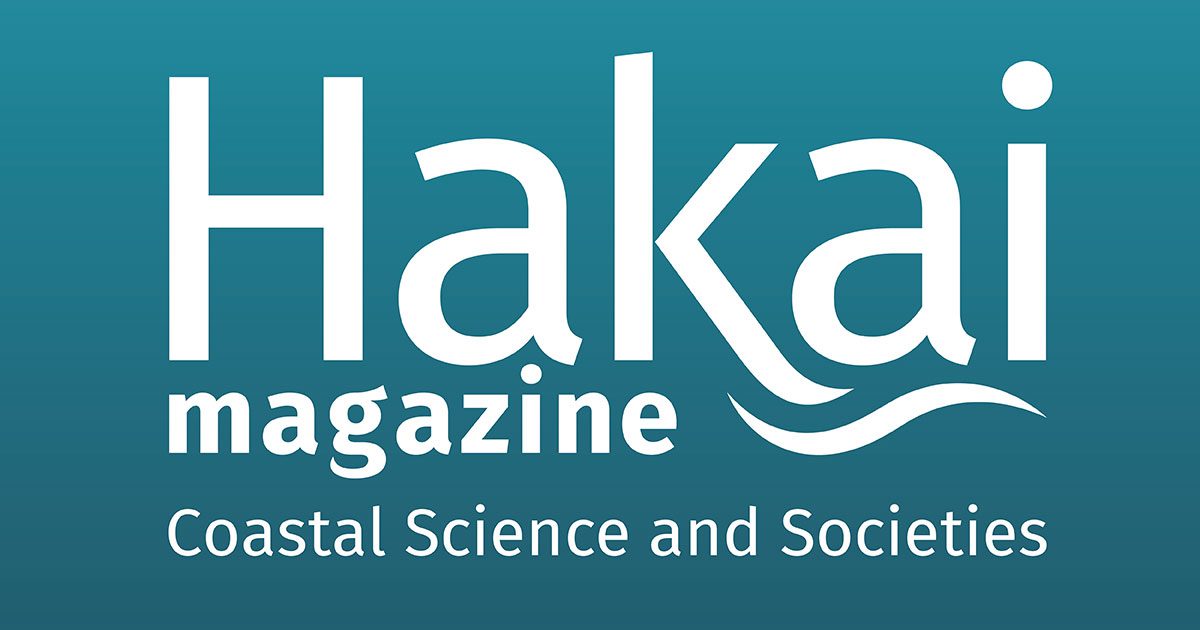Feature on News & Insight
Turning the tide against climate change
Call of the deep
Whale sharks are one of a select group of large marine animals that scientists like Thorrold, of the Woods Hole Oceanographic Institution in Massachusetts, have signed up as ocean-going research assistants.
Read MoreRobotic buoys developed to keep Atlantic right whales safe
A lab at Woods Hole Oceanographic Institution developed the technology, which uses buoys and underwater gliders to record whale sounds in near real time.
Read MoreThis robot lives with an Antarctica penguin colony, monitoring their every move
The project, funded by the independent nonprofit Woods Hole Oceanographic Institution, focuses on emperor penguins’ place on the food chain.
Read MoreYour Take-Out Coffee Cup May Shed Trillions of Plastic ‘Nanoparticles’
New research shows that paper cup of joe you grab off the coffeehouse counter contains another ingredient, and it’s one you might not care for — trillions of tiny plastic particles that leach into your hot java from the cup’s plastic lining. “I read that sentence and go, well, is it time for us to re-evaluate the guidelines?” said Christopher Reddy, a senior scientist of marine chemistry and geochemistry with the Woods Hole Oceanographic Institution in Woods Hole, Mass.
Read MoreA robot lives in this Antarctic penguin colony. It’s trying to save them
Thousands of emperor penguins cluster on the ice of Atka Bay in Antarctica, mostly unaware that an interloper lives among them. Slightly shorter than the average adult emperor, the 3-foot-tall (1-meter-tall) autonomous robot sits silently within the colony, nondescript compared with humans who sometimes emerge from a nearby research station. The birds occasionally notice ECHO, an unmanned and remote-controlled ground vehicle, because “they exhibit curiosity to everything that they don’t know,” said Dan Zitterbart, associate scientist at the Woods Hole Oceanographic Institution in Massachusetts.
Read MoreIs This New England’s Oldest Known English Shipwreck?
A nearly 160-year-old mystery just got closer to being solved. The remains of a centuries-old shipwreck stowed at a museum in Massachusetts, may be the remains of a vessel that ran aground nearly 400 years ago, researchers recently reported in the Journal of Archaeological Science: Reports. In 2018, Calvin Mires, a museum trustee, maritime archaeologist and researcher with the Woods Hole Oceanographic Institution, teamed with Aoife Daly, a dendrochronologist (tree ring researcher), and Fred Hocker, an expert on 17th-century ship construction, to conduct an in-depth study of the wreck.
Read MoreAntarctica’s Conger ice shelf collapses in most significant loss since early 2000s
The Conger ice shelf in Antarctica has collapsed, according to satellite data, in what scientists say is the most significant collapse there in nearly 20 years. While the ice shelf is relatively small — it is roughly the size of Rome — Dr. Catherine Colello Walker said the event, which came in a week with unusually high temperatures, could be a harbinger for more collapses to come.
Read MoreProtecting whale superhighways
Oceanic migratory routes that are essential to whale survival, and corridors of major human disruption. Featuring: Michael J. Moore, veterinary scientist at the Woods Hole Oceanographic Institution. Author of We Are All Whalers: The Plight of Whales and Our Responsibility.
Read MoreWhen it comes to sucking up carbon emissions, ‘the ocean has been forgiving.’ That might not last
Carbon dioxide levels in our atmosphere “would jump by nearly 50 percent” without the many ecological services the twilight zone provides, according to the Woods Hole Oceanographic Institution based on Cape Cod in Massachusetts.
Read MoreListen: Scientists Are Recording Ocean Sounds to Spot New Species
As oceans warm, scientists aim to catalog underwater soundscapes before ecosystems change.
Read MoreHow about 10% of the oil from Deepwater Horizon oil spill was eaten by the sun
A recent study carried out by Collin Ward and Danielle Haas Freeman from the Department of Marine Chemistry and Geochemistry at Woods Hole Oceanographic Institution has closed some of the knowledge gap by reconciling interactions between surface oil and sunlight. Their findings were published in the journal Science Advances.
Read MoreWarming Trends: Extracting Data From Pictures, Paying Attention to the ‘Twilight Zone,’ and Making Climate Change Movies With Edge
The ocean twilight zone exists between the sunlit waters at the surface and the permanently dark waters of the deep sea. Here, carbon is pumped from the surface waters into the deep sea by sinking and mixing, or in the bellies of deep sea creatures that come up to the twilight zone at night to feed on carbon-rich phytoplankton. These processes capture an estimated 2 to 6 billion tons of carbon annually, according to the report from Woods Hole Oceanographic Institution, which outlines the twilight zone’s role in climate change.
Read MoreRight whales giving birth a cause for excitement, but not enough to save endangered species
Difficulty in finding food is also thought to be a reason for the drop in calves, from a high of 39 in the 2008-2009 season to zero in 2018. The intervals between calving for many females have grown longer, leading researchers such as veterinarian Michael Moore at Woods Hole Oceanographic Institution to conclude female whales need to be fat and well fed to get pregnant and nurse a calf.
Read MoreRobot designed by Texas university to explore underwater glacial walls to monitor climate change
Engineered to survive ice-covered seas by project partner the Woods Hole Oceanographic Institution (WHOI), the remotely operated vehicle Nereid Under Ice (NUI) will brave icebergs and riptides to approach within feet of the glaciers and return with data and samples from their underwater environment.
Read MoreWhat We Know About Oceans and Climate Change
Climate scientists are increasingly turning their attention to oceans. For a deep dive into the science shaping our understanding of the Earth’s watery depths, host Bill Loveless spoke with Peter de Menocal, president and director of Woods Hole Oceanographic Institution in Massachusetts.
Read MoreOn Cape Cod, the latest barrage of wind and waves, exacerbated by climate change, turns concern to desperation
The coastal erosion and flooding from the weekend storm could have been far worse, especially on Nantucket, where sea levels rose 3 feet higher than the typical high tide, said Christopher Piecuch, an oceanographer at the Woods Hole Oceanographic Institution.
Read MoreHow a colossal block of ice became an obsession
A keen observer is Dr. Catherine Walker from the Woods Hole Oceanographic Institution. As a graduate student in the 2000s, she was tasked with studying those cracks in the Amery Ice Shelf. “It was actually sort of sad to see it go, because it was something that I’d had all this time, and then it was gone,” Catherine tells me. “I really appreciate Kevin’s paintings. I feel like that’s my entire career right there.”
Read MoreWoods Hole report identifies concerns, possible solutions for harmful algae blooms
HABs are a growing problem in the U.S., especially coastal states; a new report from the Woods Hole Oceanographic Institution (WHOI) on Cape Cod identifies several areas of concern and ongoing research to find solutions.
Read More11 epic mysteries scientists totally can’t solve
As you dive deeper into the ocean, less and less sunlight shines through, and about 200 meters beneath the surface, you reach an area called the “twilight zone.” Sunlight fades almost completely out of view, and our knowledge about these dark depths fades too. “It’s almost easier to define it by what we don’t know than what we do know,” Andone Lavery, an acoustician at the Woods Hole Oceanographic Institution, told Vox’s Byrd Pinkerton.
Read MoreWHOI scientist wrote a book on right whales’ possible extinction. Why you should know him.
WOODS HOLE — In the postscript to his new book, “We Are All Whalers,” Woods Hole Oceanographic Institution whale researcher Michael Moore goes where few scientists are comfortable to go, and where most scientists take deliberate steps to avoid.
Read MoreIn a First, Alaska’s Arctic Waters Appear Poised for Dangerous Algal Blooms
According to Evie Fachon, a biologist at the Woods Hole Oceanographic Institution in Massachusetts, the dinoflagellates likely drifted north as inert cysts from warmer waters, and have been lying on the seafloor for some unknown amount of time.
Read MoreA Critical Ocean Current Is Speeding Up, With Potential Global Consequences
An international team of researchers used decades’ worth of data from satellites and a global network of ocean floats to determine that as the Southern Ocean around Antarctica is growing warmer, the Antarctic Circumpolar Current (ACC) is flowing faster. “From both observations and models, we find that the ocean heat change is causing the significant ocean current acceleration detected during recent decades,” said Jia-Rui Shi, a postdoctoral researcher at Woods Hole Oceanographic Institution.
Read MoreClimate-change clues contained in whaling logbooks kept in the Providence library
Researchers Caroline Ummenhofer and Timothy Walker are searching through information collected on the Isaac Howland and other 18th-, 19th- and early 20th-century whalers to find clues about how global wind…
Read More





















